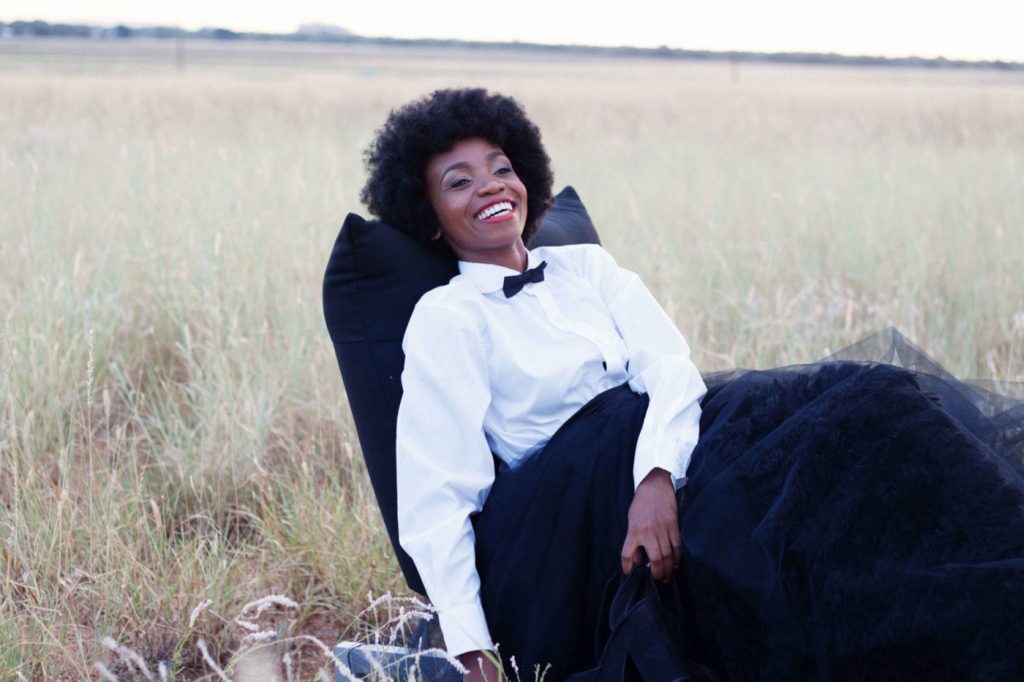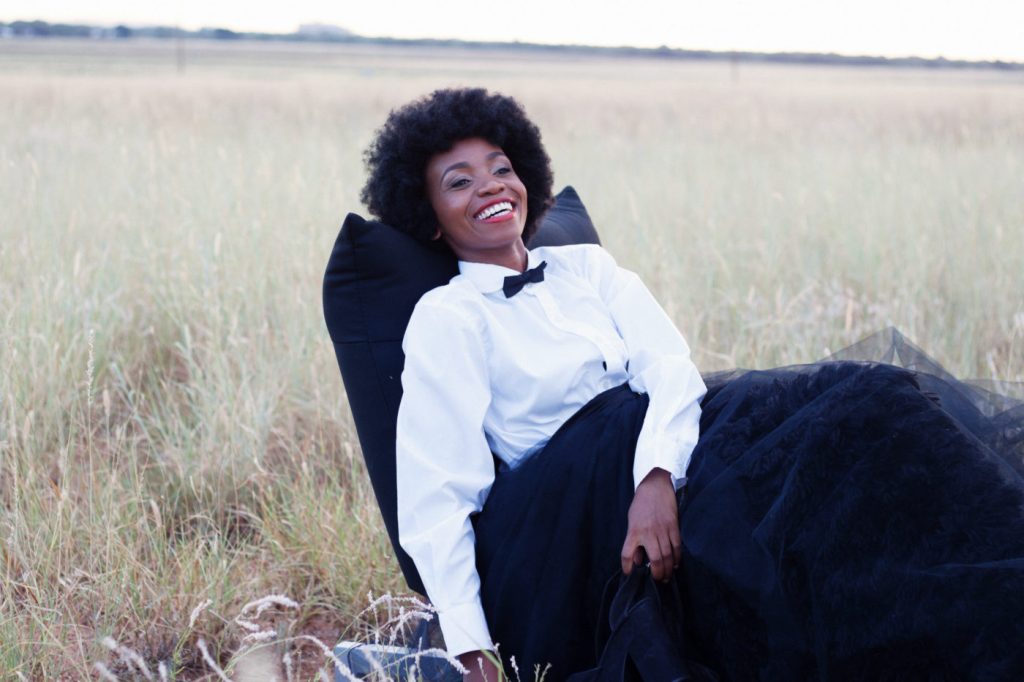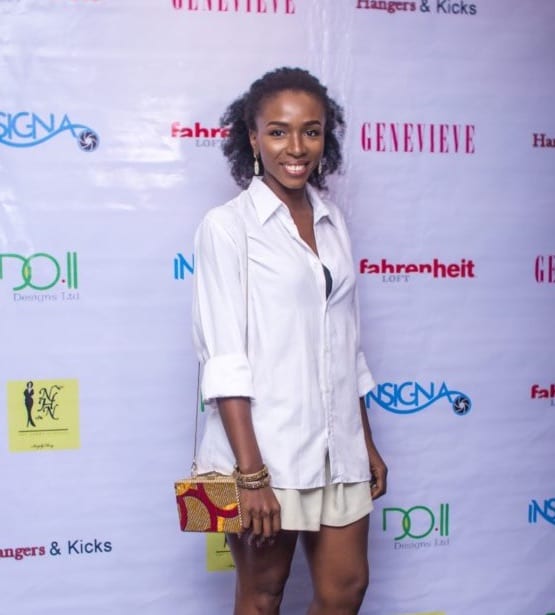Tsholofelo Dikobe: I grew up knowing I had a special relationship with clothes

[bctt tweet=”@thekhoi_fro does any and everything pertaining fashion, the world of fashion is her oyster” username=”SheLeadsAfrica”] In SLA contributor Kendi Sapepa’s last article the stylist profession was explored. What would be better than to follow up with an actual stylist? Botswana’s Tsholo Dikobe has put her country on the map through her artistic and creative nature. Tsholo has recently been nominated for the Abryanz Style and Fashion Award, in the ‘Best Dressed Celebrity’ category. Kendi recently had a chat with the renowned stylist, award-winning fashion writer, and curator Hello, Tsholo, please tell our readers a little more about yourself? I’m from Botswana and on the Voice On Fashion column in The Voice Newspaper, I give an overall forecast of the world of fashion. Furthermore, together with my partner, Gaone Mothibi, we feature established and upcoming local talent from in and around Botswana, and also around Africa and the world. How did you get into styling? Growing up, when words failed me, I spoke fluent volumes with my clothes. I grew up knowing that I had a special relationship with clothes because I wore them quite differently and uniquely all the time. When it was civic day at school, I was always the centre of attention! Fast forward to my early university days, I started dancing and working with some of Botswana’s top musicians and artists. My love for dancing required great costumes on stage, and looking the part. I was always invested in how we’d execute our looks on stage and how the final presentation will be received by the masses. This is how my styling career started. You call yourself a Fashion Artist, please tell us a little more about that title. I do any and everything pertaining fashion. I believe the world of fashion is my oyster. Also, I document and report about the world of fashion for the biggest and followed fashion column in Botswana, The Voice On Fashion. I blog about my fashion experiences and life at The Khoi-fro. In addition, I style renowned musicians and public figures in Botswana. I direct shoots for advertorials and more! Hence the term fashion artist. It’s a million fashion things in one. Please explain to us what your job entails? How does it works? What are the day to day activities etc? The world of fashion is an exciting yet disrupting pursuit. It’s exciting in the sense that no day is the same. You get to experience networking with great people and icons in the field and learn so much. Moreover, styling people is a great joy. From being responsible for how a person looks at themselves after you have styled them —the feeling is always great. The visible inner dialogue change that you get to experience with a client is a fulfilling feeling. From a technical aspect, I organise photos shoots, co-ordinate shoot outfits and develop a creative communication. Moreover, I develop a fashion trend report or fashion calendar for upcoming fashion seasons. You get to be responsible for deciding the creative influence and direction of a trend/product. There’s also supervising the work of photographers, models, clients, for a high end fashion editorial. Would you say that your field is fairly easy to get into? It is, but what you need far beyond anything else is passion and dedication. [bctt tweet=”Tsholofelo Dikobe: The world of fashion is an exciting, no day is the same. ” username=”SheLeadsAfrica”] Are there other avenues someone could take with your experience? The world of fashion has many fields. There is the business side of fashion which involves fashion entrepreneurship and management. For the business-minded people, one can get into retailing, buying or merchandising. You have to know your area of interest and act accordingly. Often, some companies will encourage lesser known people and newcomers to work for free, however offer experience and exposure, what is your take on this? I believe there is an entry level to any career or profession. But the entry level should come with a monetary incentive. An entry level does not mean exposure. Exposure in my books just means it is unpaid work, which is daylight robbery. What would your advice be to people who are looking to get into styling? Learn and know the history of your craft. Identify a gap and creatively close it. Where can people see your work? You can follow me and my work on Instagram, and with my partner Gaone Mothibi. I’m also on Twitter and Facebook. Want to see women you know featured on SLA? Tell us what amazing things women are doing in your communities here.
Twitter Chat with Tsholofelo Dikobe: Building a multifaceted fashion career (Dec. 1)

There are various ways to get involved in the fashion industry besides fashion design. We recently met a Motherland Mogul who is making waves in the fashion industry via multiple channels. Unable to be branded under just one category of fashion, Motswana Tsholofelo Dikobe, is known as a fashion artist. As a fashion journalist, blogger, curator, stylist and creative consultant, Tsholofelo is fully immersed and respected in the world of fashion. She is currently in the running for Southern Africa’s Most Stylish Female Celebrity. Join us Thursday Dec. 1st for a Twitter chat with Tsholofelo Dikobe. She’ll be sharing with us how she has been able to build her own niche within the fashion world and created a career for herself on her own terms. Follow She Leads Africa on twitter and use the hashtag #SLAChats to ask your questions and participate in the discussion. Topics that we’ll cover: Networking and making connections in the fashion world What it means to be a fashion artist How to become a stylist for A-listers and celebrities Staying unique and wading through the noise Twitter chat details Date: Thursday Dec. 1, 2016 Time: 7am NYC // 1pm Lagos // 3pm Gaborone Location: Follow She Leads Africa on twitter and use the hashtag #SLAChats Help us spread the word: [bctt tweet=”Join @TheKhoi_Fro & @sheleadsafrica for a twitter chat about building a fashion career, Dec. 1 @ 12pm GMT” via=”no”] About Tsholofelo Dikobe Named a fashion trail-blazer you should follow by CNN, Tsholofelo Dikobe is a fashion artist from Botswana. Tsholofelo Dikobe is the co-founder and fashion artistic director of GaTsh Fros, a creative duo that focuses on advocating for creativity and confidence building through fashion. She is widely regarded as a pioneer in fashion, image consultancy and fashion creative direction within Botswana. Tsholofelo works with Botswana fashion enthusiasts on brand positioning to help brand a new Botswana where now the focus is in favour of raiment designs by local Botswana artists. Tsholofelo has worked as fashion stylist alongside one of UK’s top stylists, Arieta Muray, for Gaborone Fashion Week featuring people like Quincy Brown, LaQuan Smith, YaYa Dacosta and Sessille Lopez. She had also appeared in campaigns and her style had been profiled by CNN African Voices, ELLE Magazine, S.A. New African Woman magazine, Marie Claire, AfroElle, Glamour and many others.
7 other viable fashion career paths

[bctt tweet=”A career in fashion is a lot more than just having good style” username=”SheLeadsAfrica”] We’ve seen how fashion can be an empowering tool for women. There are several layers to explore with a fashion career. It’s a lot more than just having good style, and it poses several opportunities for one to exploit. You could have a strong love for fashion and wish to make a career out of it, but not be sure you want to go down the path of fashion designer. Because that’s so mainstream? Well, there are several other viable career options to explore. Here are 7 outlined below: 1. Fashion Stylist This is a very lucrative path for one who is prepared to take it on. Despite how glamorous it sounds, it’s a lot of hard work that requires a good eye for detail and an understanding of your client’s needs. You’ll be working with designers, music producers, magazines etc. The life of a fashion stylist is crazy hectic, just ask Ifeoma Odogwu of Hyperfashun. Crazy schedules, tight deadlines, a cut-throat industry; so if you’re not built for pressure, ditch the thought. You can either work freelance or as an attaché. Starting out as a freelancer, you can’t expect to charge up a storm for your services. However, as you build your clientèle and reputation you are able to gradually increase your fees. [bctt tweet=”The life of a fashion stylist is crazy hectic, if you’re not built for pressure, ditch the thought” username=”SheLeadsAfrica”] 2. Fashion Illustrator There are much fewer fashion illustrators in the industry but it is a path that holds great promise. This is a path that requires specific skill with pencil and with the brush, with colour and with imagery. As a fashion illustrator, you get to work with fashion houses and magazines to create drawings and paintings bringing the client’s vision to life. Claire Idera, the London-based fashion illustrator explains that there is a lot more to illustration than simply having the ability to draw silhouettes. Furthermore, one must have the ability to extract the essence of the client’s imagination and portray it with paper and colour. If you’ve got the artistic skill and comprehensive ability to become a fashion illustrator, you’ll certainly be in high demand any time soon. 3. Fashion Editor Are you thinking Anna Wintour? The title of fashion editor is no small feat. You must be able to write, obviously and you must also be able to wear the hat of fashion director. Predicting fashion trends come with the territory so it goes without saying that you must be super stylish and understand fashion to a T. You’ll be supervising photo shoots, writing and editing fashion articles, selecting high-quality photos for publications. You’ll need to pay your dues in the industry so starting out as an intern in fashion or with a magazine is always a good idea. [bctt tweet=”If you want to be a fashion editor, starting out as an intern is always a good idea” username=”SheLeadsAfrica”] 4. Fashion Photographer In Nigeria, most people think the only moneymaker for photographers is wedding shoots or coverage. Welcome to the world of greats like Kelechi Amadi-Obi. Besides having top-notch photography skills, the aspiring fashion photographer must be organized and deeply creative. It is your job to set the tone, create the best lighting and texture that will breathe life to the fashion or art pieces on a shoot. You should also be fashion-savvy and have the ability to think on your feet. Photographers have their work featured on fashion and lifestyle websites, blogs, print magazines, digital campaigns etc. And hey, besides the sweet paychecks you get the repute of discovering new faces in fashion like Olajumoke Orisaguna! 5. Fashion Model Women like Fatima Siad are killing it on the runway. If you’re not one to be behind-the-scenes then this is a great career prospect for you. To break into the industry, you need to have a combination of looks and attitude. If you photograph well and have striking features including a fit bod, this might be a career for you. You’ll need to put together a portfolio and find good representation with reasonable terms. Laurie Frempong has taken the more challenging route of being her own PR/Manager. Perks of the job include travelling, working with big name designers and gaining self-exposure especially if you already have an exit strategy in mind. [bctt tweet=”To break into the fashion industry, you need to have a combination of looks and attitude.” username=”SheLeadsAfrica”] 6. Buyer A buyer’s job is most interesting. Working for fashion stores, boutiques, and big fashion chains, the buyer is responsible for handpicking the pieces that go into retail. This is done through a basic understanding of consumer psychology; observing what items customers are most interested in buying and predicting what items will be on-trend in the next season. As the middleman between suppliers and customers, a fashion buyer must have the ability to multi-task, have a great customer approach and be super intuitive. There’s also a lot of travel involved. 7. Visual Merchandiser Last but not least, is the visual merchandiser. This is a subtle role that no one ever really gives too much thought to except it’s an essential part of fashion marketing. When you walk into a store, what are the first things you notice? The layout looks exquisite, doesn’t it and for some reason, the sales items are all the way behind? Well, that’s the merchandiser at work. Their job is to create an appealing outlook and prioritise the placement of pieces for optimal visibility, especially those items that need to be selling. [bctt tweet=”The role of a visual merchandiser is actually an essential part of fashion marketing” username=”SheLeadsAfrica”] Michelle Duwe, Visual Merchandising Manager of Topshop SA explains that to go down the path, you would need to have loads of energy, creativity and enthusiasm to dress up the mannequins in the display window and sort out all the fittings. Let us know
Looking into the stylist profession

Style can be defined as; a distinctive way or method that a particular item is worn. As life would have it, not all of us are great at style, which is when stylists come to the rescue. Being a stylist is fast-becoming one of the quickest emerging careers of the fashion professions. Stylists generally source, borrow and return clothing (if not bought) for various jobs. Most importantly, stylists are there to show how the clothes should be worn. Meaning, whether a shirt should be tucked in or not, sock folded or scrunched, top off the should or not, which turquoise clutch suits a look better etc. Their jobs vary, from styling photo-shoots, events, TV-shows, music videos and celebrity appearance, just to mention a few. On these projects/jobs, they often work hand-in-hand with hair-stylists, make-up artists and designers to put together complete looks. How it works How it works is that a stylist will decide on a style or theme for the specific job then start sourcing items for it. While sourcing, there may be some boutiques or clothing stores that require a deposit to hold. This is as a form of security should the clothes not be returned or come back damaged or dirty. Others require a payment and refund when clothes are returned, while other boutiques and stores may loan clothes free of charge. Once everything has been collected for the job, the stylist will ensure that they get to the client on time, in good shape (ironed, clean, no missing buttons etc) and are ready to be used. The stylist will also source shoes and other accessories to complement the looks. Stylists can work in various publications such as magazines, on a permanent or freelance basis, where they source items for editorial photo-shoots or write articles on latest trends, personal style, do designer features and so forth. Some stylists work with models and actors on set when recording films, soapies, adverts and so forth. They co-ordinate the clothes worn and may help with props as well. Another option is wardrobe styling where stylists work one-on-one with the client in order to get rid of clothes that are no longer worn, source new ones and arrange them in such a way that everyday dressing becomes easier for the client. Show styling is another option, where the stylist will dress all the people going on stage. For example, hosts and award announcers will be styled by the stylist. One very popular profession would be celebrity styling, which is done by stylist who dress celebrities for all their appearances. Another interesting career option is Brand Consulting, where a stylist can be hired to style a collection by showing the client how it can be put together to achieve various looks for the advertising campaigns, websites and all other media. How to become a stylist So, how does one become a stylist? Having a fashion-related degree would be a great start. If you’ve studied something else and wish to start a career in styling, you could easily; Start off with trial shoots, where you work with a team that is shooting, by helping around. This will be the start of you building your portfolio. Although some companies may not want to pay, due to little or no experience, you could work for free or reach a compromise with them and request that the company at least cover your petrol/transport expenses. Build a contact book by building relationships; this will go a long way especially with referrals and word-of-mouth being such an effective marketing tool. Lastly, advertise yourself and services that you offer. Have what you do in you your social media bio’s along with an email address or phone number that you check regularly. The skills you need to become a stylist These few points could go a long way, but there are some skills that you would definitely need as well. They include; Having an eye for detail really goes a long way. Being organised will help with deadlines or when you’re working on more than one project. Doing your research when meeting with clients. Be it for a certain era, colour or mood, you will need to be well-prepared. Being aware of latest trends and styles. Also knowing when and how to use them and also, when not to. Knowing how to conceal body flaws (should the client wish to do so), or how to accentuate them, should the client want to. Having patience for when business is quiet and when clients keep sending thing back and are not happy. Being well presented, in dress, speech and how you are in general as you are a walking portfolio.
